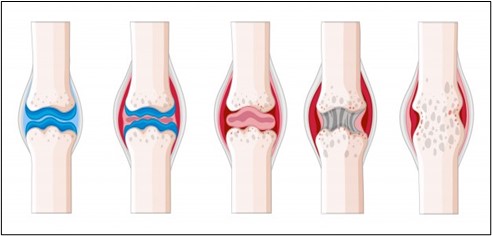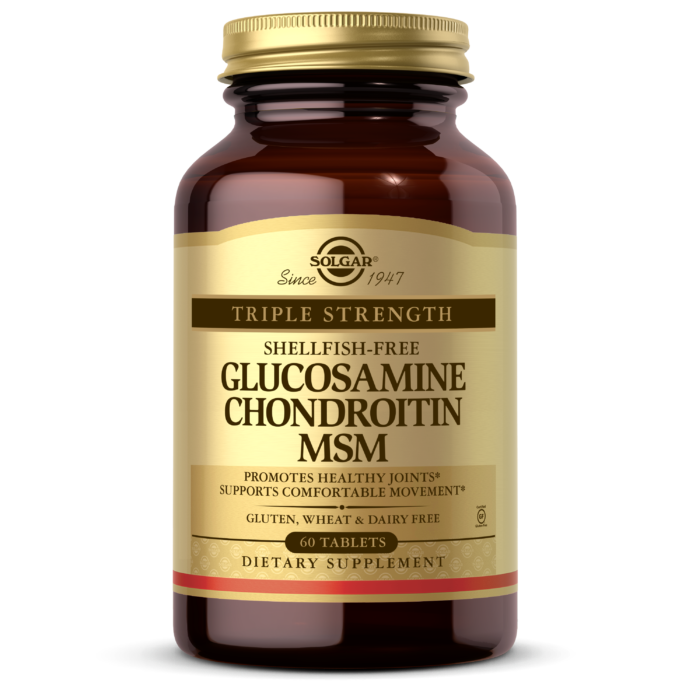Glucosamine, monosaccharide
Description : Glucosamine is abundantly present in body and generally found in bone, bone marrow and around the
Article Details :
Glucosamine is a monosaccharide (the simplest form of sugar) present abundantly in body when protein (amino acids) binds with sugar (glucose) then it forms glucosamine. It is also termed as amino sugar. It is mainly derived from chitosans, polysaccharides and chitins and acts as a precursor for the synthesis of glycosylated protein (glucose + protein). The main glycosylated proteins synthesized by glucosamine are glycoproteins and glycosaminoglycans. These act as potential building blocks of body which helps in the synthesis and growth of cartilage, tendon, ligaments and synovial fluid. It is primarily used for treating bones and joints disorders and used as a preventive measure for arthritis. It also helps to prevent inflammations and hence helps to reduce the feeling of pain. Recently glucosamine is supplemented with various scientific methods and is used by a wide range of people. Basically, it is found in three forms which are glucosamine sulphate, glucosamine hydrochloride and N-acetyl glucosamine among which, most healthy amino sugar is glucosamine sulphate.
Glucosamine sulphate is responsible for the production of fluids that surround the joints, cartilage, bone and tendons and also helps to protect them from external injuries. On the other hand, glucosamine hydrochloride is related to build up a cushion like structure that surrounds the joint and helps to prevent joint to joint collision. Whereas, N-acetyl glucosamine shows its effect on treating arthritis, ulcerative colitis, inflammatory bowel syndrome, crohn’s diseases, knee pain and aging of skin.
Source
- Glucosamine is abundantly present in body and generally found in bone, bone marrow and around the joints
- It is also present in shell fishes like lobster, shrimp
- It can be also obtained by consuming supplements which are generally synthesized in laboratories using efficient scientific method. For example, glucosamine sulphate is prepared from the shells of shellfish and commonly used as an effective dietary supplement for preventing various abnormalities of joints
- As mentioned above there are mainly three forms of glucosamine commercially available as dietary supplements and are extensively used
- All of these are the basic sources of glucosamine but before consuming glucosamine, it should be kept in mind that, if an individual have allergies in shell fish then it should be consumed carefully with proper dietary consideration recommended by nutritionist for avoiding health risks. Whereas it can also consumed through supplements but individual who suffer from diabetes, heart disease, hypertension, bleeding disorders and renal disorders should consult physician before taking glucosamine supplements
Health benefits of glucosamine
Role on preventing arthritis
- Inflammation of joints is referred to as arthritis. It has found that when the joints are inflamed, they tend to develop stiffness, swelling, pain, warmth and redness. Glucosamine helps to improve these symptoms of arthritis (especially osteoarthritis)
- Glucosamine helps to synthesize aggrecan, an important substance of cartilage. Aggrecan helps to enhance the hydrophilicity of cartilage which is associated with maintaining its structure and protect the cartilage inside the joints from damages and helps to inhibit joint inflammation

- It has shown that in arthritis the cartilage become thin due to its breakdown which causes stiffness of joints with frequent frictions and severe pain. Glucosamine helps to protect the cartilage from becoming thin by preventing its breakdown and increases the synthesis of fluids that surround the joints. This is the most important feature responsible for delaying the structural progression of arthritis
- It also helps to prevent the narrowing of joint space and reducing the incidence of friction thus reduces pain
- It is mainly beneficial for knee and hip arthritis and it is recommended to consume about 1500mg of glucosamine (glucosamine sulphate) daily to prevent arthritis. It has also found that if the consumption of glucosamine is not continued, still it provides its beneficial action up to next three months
Role on inflammation
- It has found that glucosamine has anti-inflammatory property and helps to prevent inflammation and pain
- It helps to reduce the level of pro-inflammatory factors like interleukin-1, interleukin-6 and increases proteoglycans synthesis, which is associated with decreasing the breakage of cartilage
- Promoting cartilage health is related with improving joint functions
Role on joints and its effect on treating bone and joint disorders
- Glucosamine has joint protective effect and it is associated with synthesizing new tissues between joints
- A smooth white tissue named articular cartilage is one of the most vital tissues produced by glucosamine present at the end of bones and helps to it. They are met there (end of each bone) to initiate joint formation
- It is found that these tissues along with synovial fluid (a lubricating substance) help the bone to move flexibly without any friction and helps in the painless movements of joints

- It Read more




